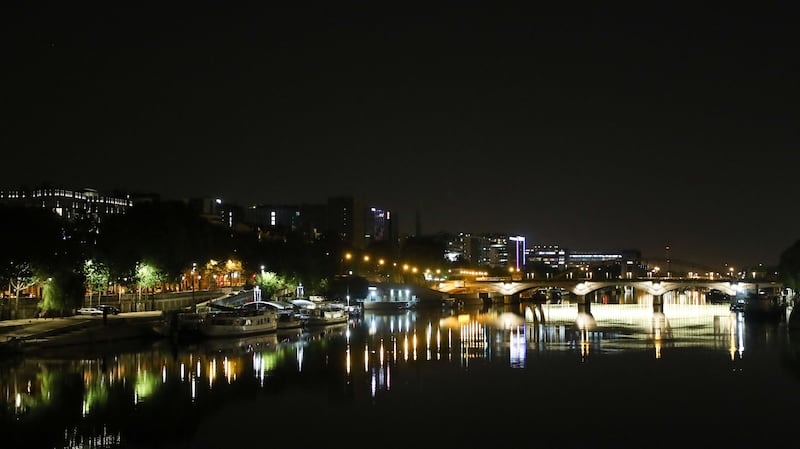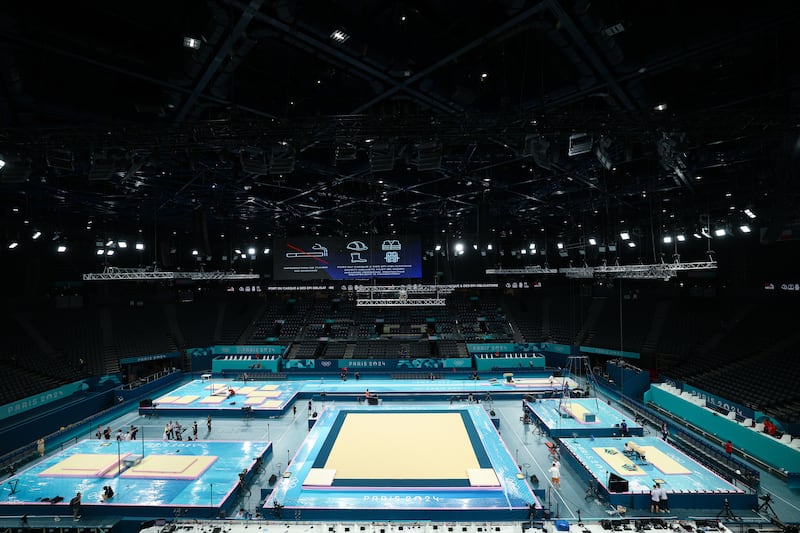The plan for my first morning run was to head from our reporters’ team hotel at Gare de Lyon, straight across the River Seine at Pont d’Austerlitz, and into the magnificent Jardin des Plantes. From there the City of Light beckons.
Anyone who has covered the Olympics before will tell you the important thing is to hit the ground running. There is no time to lose, only a head start to be gained, even if that’s mostly to clear the head before the chaos of the Games truly begin.
Turns out this first morning run didn’t get me very far at all, as it ran instead straight into the path of the Opening Ceremony which, if you haven’t heard by now, will start right here at Pont d’Austerlitz with a flotilla of 85 barges on the Seine itself, parading the 206 competing delegations, with around 6,000 of the 10,700 athletes.
From here it will follow a 6km stretch of artistic fresco down along the river as far as Trocadéro, just across from the Eiffel Tower, where the athletes will disembark and participate in some sort of flag-bearing exercise, in front of around 100 heads of state.
READ MORE
All to be revealed by around 10 o’clock local time on Friday evening. (We do know the larger Olympic delegations will have their own barge, and the smaller ones will share one).
The first Opening Ceremony not taking place inside the Olympic Stadium, and surely the first waterborne one anywhere, if they do pull it off exactly as planned, it will be something utterly different, perhaps even unforgettable.
Only for now, Pont d’Austerlitz has been transformed into an armed checkpoint, in near complete lockdown as if suddenly back in pandemic times, as have all the other bridges up along the way, including Pont Alexandre III, and Pont du Sully, at L’île Saint-Louis.

The armed Gendarmes who stopped me in my running tracks were polite, calmly informing me to turn back (while I’m sure one of them admired my Nike Vaporfly). There is still pedestrian access only for local Parisians who have been provided with a special QR code to cross the Seine, but there’s obviously none of the bustling life and spirit about the riverbank that there would normally be in high July. Not when the left and right banks of the Seine are sealed off with 44,000 2m-high metal barriers – which promptly earned the nickname ‘the Iron Curtain’.
Part of the original idea was to allow ticketed access to 600,000 spectators, before someone in charge of security decided that was bit too risky, so they halved it to around 300,000. If you’re not already on that ticket list, you won’t get near the Seine on Friday evening (thought you might still be able to catch it from a near distance on one of the 80 giant LED screens)
Paris is unquestionably ready for these Games, waiting a century now to welcome them back, after missing out twice in recent enough years – losing the 1992 bid to Barcelona, a mild surprise to some, and the 2012 bid to London, a wild surprise to many.
They claim a record 8.7 million tickets have already been sold and, in keeping with their pledge to halve the Games’ previous carbon footprint, 95 per cent of the competition venues were pre-existing, or one of the seven temporary structures set up in the shadow of an iconic monument or historical square.
This cultural cachet is enormous, and what ultimately has the capacity to set these Games apart. Every other host city has in some way tried to go there – London’s Buckingham Palace, Rio’s Copacabana, even Tokyo’s Nippon Budokan – but no city is embracing more of its own self than Paris.

And many of these iconic venues will be easily accessible too. The nearby Bercy Arena, the venue for the gymnastics and basketball finals; Les Invalides, wherein lies Napoleon Bonaparte’s tomb, the venue for the archery events, and where both the marathons will finish; the Eiffel Tower, the venue for beach volleyball; and Champs de Mars, once the parade ground for 18th-century army cadets, now the judo and wrestling venue.
Paris will also make Olympic history by putting the women’s marathon on after the men, on the last day, that running route also following in the historic footsteps of the women revolutionaries who marched to Versailles in 1789, demanding bread and arms.
The men’s and women’s cycling road race will also take in the cobbled hills of Montmartre, where Louis Renault supposedly road-tested his first car in 1898. These also being the first Games to boast complete 50:50 gender balance.
There is still a clear and present danger to the start of the triathlon at Pont Alexandre III, given the not-so-clear water of the Seine, and also the 10km marathon swim, over a 600m stretch of the water here, and where Daniel Wiffen may find himself chasing a third Olympic medal.
On the matter of filthy lucre, Paris has spent more than €1 billion already to properly clean up the Seine for the first time in 100 years, when they last hosted the Olympics, but that still mightn’t save the 1.5km triathlon swim, which could be cancelled completely should adverse weather conditions further impact on E Coli levels, meaning the Olympic triathlon would be bike-run only.
“We have dreamed of, prepared and perfected this ceremony at the heart of the most beautiful city in the world,” Tony Estanguet, head of the Paris organising committee, says of the Opening Ceremony. “And it has been completely reinvented, which will set the tone of our Games . . .open, innovative and spectacular!”
Not exactly liberté, égalité, fraternité, but once they start to move away the armed checkpoints, it’s a short run from here to many of those Olympic venues.
















